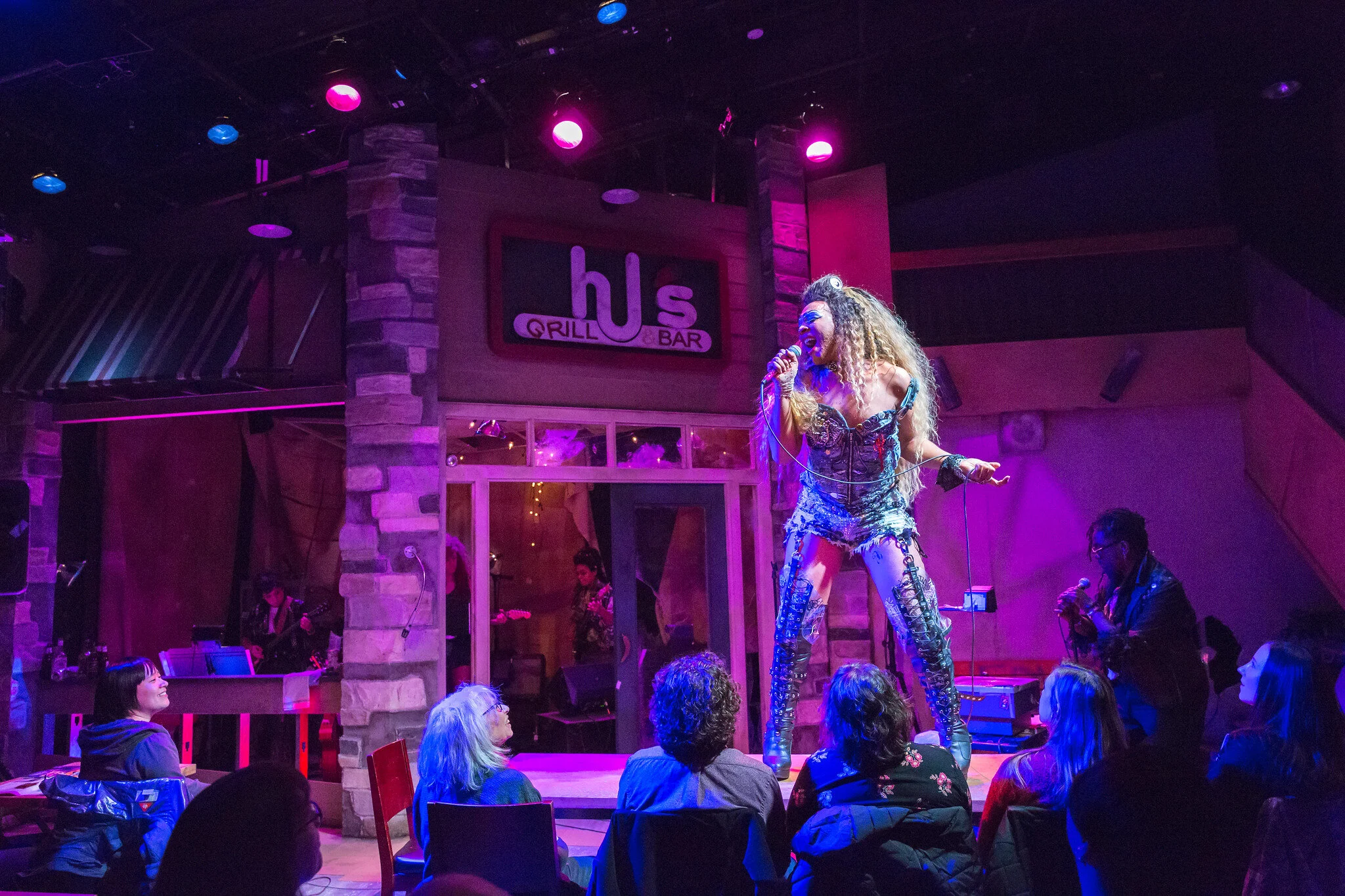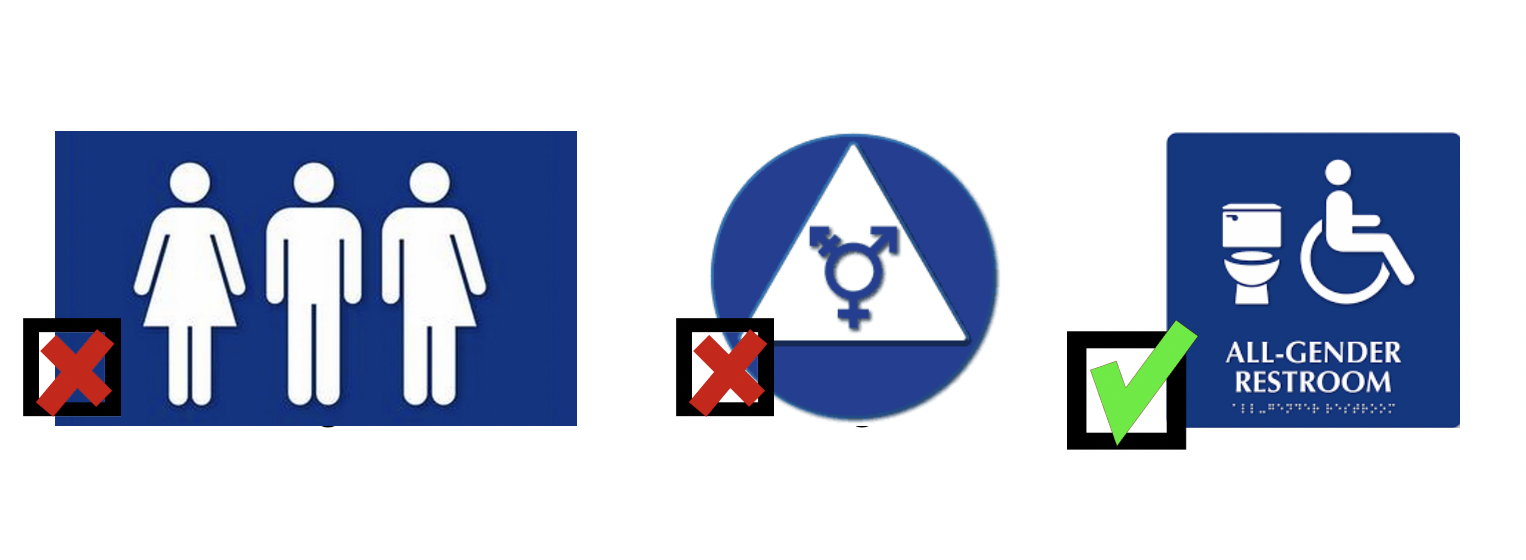Inclusive Signage Practices for Arts Organizations
There is no doubt that most arts organizations are committed to improving diversity, and while most also embrace the idea of inclusion, fewer know how to implement it. Fostering a culture of inclusion – where all visitors feel welcome – is not only the right thing to do but it has also been shown to produce real results. Implementing inclusive design, for instance, can not only improve brand reputation and recognition but can also have financial benefits. Research launched by the Centre for Inclusive Design reveals that centering visitors who may have difficulty accessing services (called "edge users"), can increase retention and reach up to four times the size of the intended audience.
Many arts organizations are rethinking how they display information through their signage. We took a look at the best practices for creating inclusive signage. Here’s what we found in three key areas — plus a few tips for getting started.
Leveraging Digital Signage
The flexibility and creative features digital signage solutions offer make it easy for organizations to display informative, eye-catching content to engage audiences. These can take a variety of forms and be used to display way-finding, information, or to create a more interactive experience for visitors. Even if the initial investments are higher, it can provide the opportunity to incorporate more inclusion at your venue in the long term and to create an environment that fosters trust in your patrons. Digital also allows organizations to change signage depending on who is using the venue and to easily update it over time (in the same way that Apple stores use iPads for labeling and instruction).
Many believe that digital signage solutions can be your best bet in making your users' experience more inclusive. Omnially Blog published an article on 3 Ways to Improve Inclusion at School Using Digital Signage, which can be applied to the cultural sector. These are:
Use digital signage as a tool to share your values: schools use digital signage content to showcase inclusion initiatives, and arts organizations can highlight their own values by sharing images from their community engagement work and other mission-driven activities with all visitors.
Adopt multilingual digital signage: help visitors who speak different languages feel welcomed — and make sure they fully understand important messages.
Display accessibility information: digital signage can make it easier to map handicapped and gender-neutral washrooms or access points.
Four Winds Interactive (FWI) released a Universal Design Guide for Digital Signage, with a list of tips and best practices from organizations of all sizes (with implementations ranging from 10 to 2,000 screens) to help to design accessible digital signage.
All-Gender Inclusiveness in Washrooms
Some all-gender inclusive pictograms, such as the one depicting a half-female half-male figure, are well-intentioned but can be considered confusing or even offensive as it implies either a third gender at best or a half-and-half hybrid at worst. Out & Equal recommends using ADA-compliant signage that doesn’t reinforce gender binaries, such as an image of a toilet instead of gendered pictograms. The best solution is to focus on the service itself instead of labeling users of the service.
In an ideal scenario, all organizations would be able to provide male, female, and all-gender washrooms, with corresponding appropriate signage. But that’s not always easy. For some organizations, providing all-gender washrooms may cause longer queues between intermissions or extra costs (e.g. the need to install a sanitary waste bin in each stall). If this is the case, there are still steps you can take to build a more inclusive experience for your visitors:
Identify less obvious options: if it's not possible to have all-gender washrooms near the gendered ones or to adjust already existing facilities into gender-neutral ones, perhaps there are alternative facilities (e.g. staff restrooms) that can be designated as an all-gender washroom. Way-finding signage should direct guests to these facilities that can accommodate them.
Rework existing spaces: another solution is to provide safe and private toilet and urinal options within your existing restroom facilities. To enhance privacy, an easy method is to add special strips to get rid of the gaps between stall doors and stall walls and add stalls around existing urinals.
Demonstrate inclusion through language: if none of the above are possible, you can make washrooms more gender-inclusive by adding a “self-identified” note underneath the gender pictogram. This allows users to make their own choice of which facility suits them better — but this method still excludes groups that identify as non-binary.
Disability Inclusiveness: Induction Loop Systems
All in all, to accommodate the widest range of users’ needs through inclusive signage, the best solution is one that includes a spectrum of considerations, from the conception of the graphics and content (colors, contrasts, wordings, pictograms, etc.) to the implementation (placements, aids sources, support, etc.) of the signage.
To accommodate visual and hearing disabilities, visual, tactile, and audible information are all essential. In particular, AFILS (Audio Frequency Induction Loop Systems), with sound as well as visual direction, is an effective way to accommodate a deaf or hard-of-hearing public. It allows those who have a hearing aid or a cochlear implant to hear the audio signal directly into their hearing aid, greatly reducing background noise and other sounds that affect acoustic clarity. Sound can be heard by the users by switching to the Tele-coil (T switch) on their hearing aid.
A loop system may easily be installed by experienced professionals in virtually all spaces of public accommodation. However, installation costs and project scope can vary depending on the venue's size and its already available cable system. We estimate small room installations may cost $5,000 to $10,000. Typical installation costs for larger venues (such as small auditoriums, senior centers, churches, etc.) are $11,000 – $35,000. Performing Art centers, theaters, large auditoriums, and arenas at $50,000 to $200,000. The John F. Kennedy Center for the Performing Arts has made available a guide for museum settings on Assistive Listening Systems for People with Hearing Loss (for a list of manufacturers, please refer to page 33).
Getting Started
Looking to begin implementing your own inclusive signage? We identified three routes to take, from finding a partner to designing on your own:
Partner with independent inclusive design consultants that can help to design the best option for your organization.
Consult with signage solutions specialized companies, such as BlinkSigns.
Use easy and cost-effective online resources for finding a wide variety of inclusive signage and way-finding visuals. Two examples are the Graphic Artist Guild's Downloadable Disability Access Symbols, used by The Smithsonian Institution, or the variety of DEI&A compliant icons professionally curated by the Noun Project.
Want to know more about the main considerations to build your inclusive signage strategy? ABA members can read our full report and find additional resources here.




